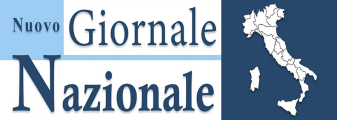“The War Must Go On”: perché finanziare la guerra è un’assicurazione sulla vita per le finanze europee.
Dalla cronologia completa delle minacce USA (Trump e Biden) di sanzioni alla Germania per il Nord Stream 2, a "The War Must Go On: perché finanziare la guerra è un'assicurazione sulla vita per le finanze europee": un viaggio nella zona d'ombra dei cosiddetti valori occidentali e dei proclami di un Putin che si erge a difensore del principio di autodeterminazione dei popoli.
Gli Stati Uniti, sia sotto l'amministrazione Trump sia sotto quella Biden, hanno espresso in modo coerente e pubblico la loro opposizione al progetto Nord Stream 2, attraverso dichiarazioni politiche, misure diplomatiche e sanzioni economiche. Quando la crisi in Ucraina è aumentata, Washington ha ribadito che il gasdotto non avrebbe dovuto entrare in funzione in quel contesto di tensione internazionale.
Le attuali accuse che attribuiscono una sola responsabilità per il sabotaggio del Nord Stream non tengono conto del quadro geopolitico più ampio, in cui diversi attori - inclusi anche esponenti istituzionali statunitensi - avevano espresso valutazioni o ipotesi differenti: dalle dichiarazioni di funzionari USA secondo cui "gruppi filo-ucraini" potrebbero essere coinvolti[1], alle indagini riportate da Washington Post, che indicavano la possibile conoscenza preventiva da parte dell'intelligence americana di piani attribuiti ad attori ucraini[2], fino alle analisi di Politico e CNN, in cui fonti ufficiali USA sottolineavano che non vi erano prove conclusive su un unico responsabile e che più scenari restavano aperti[3].
Alla luce della complessità dell'operazione e dell'importanza strategica dell'infrastruttura, la questione centrale rimane se un evento di tale rilevanza possa essere verificato senza che più servizi di intelligence - non solo statunitensi - fossero almeno consapevoli di anomalie o segnali preliminari, indipendentemente da chi ne sia stato l'esecutore materiale.
Ora, se a questo aggiungiamo la cronologia che segue:
2017–2018: L’avvio delle tensioni (Amministrazione Trump)
- Dicembre 2017. Trump firma il CAATSA, che consente sanzioni contro progetti energetici russi come Nord Stream 2[4].
- Luglio 2018 – Summit NATO (Bruxelles)? Trump accusa la Germania di essere “totalmente controllata dalla Russia” per colpa del gas russo[5].
2019: Pressioni e minacce dirette
- Dicembre 2019? Il Congresso approva il NDAA 2020 con sanzioni mirate contro le navi che posano i tubi[6].
- 20 dicembre 2019. Le sanzioni entrano in vigore: la società svizzera Allseas sospende immediatamente i lavori su Nord Stream 2[7]. Il gasdotto si blocca per mesi.
2020: Escalation delle minacce (Trump)
- Estate 2020. Gli USA minacciano sanzioni secondarie anche contro compagnie di assicurazione, ingegneria e porti tedeschi coinvolti[8].
- Agosto 2020. Pompeo estende formalmente le sanzioni CAATSA al progetto[9].
2021: Biden eredita il dossier
- Gennaio 2021. Biden definisce Nord Stream 2 “un cattivo affare per l’Europa”[10]
- Febbraio 2021. Gli USA sanzionano per la prima volta la nave russa Fortuna[11].
- Maggio 2021: Biden sposa una posizione più morbida per non rompere con Berlino cosicché il 19 maggio 2021 Blinken sospende parzialmente le sanzioni contro Nord Stream 2 AG per “ragioni di interesse nazionale”[12] La decisione viene molto criticata al Congresso
- Fine 2021: Ritorna la linea dura di Biden ed infatti a Dicembre 2021 ecco che Blinken e Biden avvertono pubblicamente: “Se la Russia invade l’Ucraina, Nord Stream 2 non entrerà mai in funzione.”[13]
2022: Ultimatum USA alla Germania
- 7 febbraio 2022 – conferenza con Scholz. Biden: “If Russia invades… then there will be no Nord Stream 2. We will bring an end to it.”[14]
- 22 febbraio 2022: Germania sospende Nord Stream 2. Dopo il riconoscimento russo delle repubbliche separatiste: Scholz blocca la certificazione, di fatto fermando il progetto[15].
- 23 febbraio 2022: Sanzioni finali USA (Biden). Gli USA impongono sanzioni totali contro il Nord Stream 2 AG ed i dirigenti dell’azienda[16]. Il Nord Stream 2 è politicamente e finanziariamente morto.
Settembre 2022: Esplosione dei gasdotti Nord Stream 1 e 2.
Ufficialmente non parte delle minacce USA, ma epilogo della storia[17].
Per somma con il Nord Stream salta pure il progetto franco–tedesco nato
il quadro complessivo appare meno facilmente decifrabile di quanto in questi giorni lo si voglia far apparire andando a far emergere l’immagine di una Ucraina in balia del malcostume e della corruzione a tutti i livelli, ed oltretutto responsabile motu proprio (?), di aver messo in ginocchio la Germania e con essa l’intera EU.
Tanto per non parlare dell’azzeramento definitivo del progetto europeo che aveva preso il via il 22 Gennaio 2022 con la sottoscrizione del cosiddetto Trattato di Aquisgrana o Trattato di Cooperazione franco-tedesca di Aquisgrana, da parte del Presidente Emmanuel Macron e la della cancelliera tedesca Angela Merkel: un trattato di cooperazione tra i due stati mirato a completare, rilanciandolo, il trattato dell'Eliseo firmato dai loro predecessori, rispettivamente Charles de Gaulle e Konrad Adenauer, lo stesso giorno del 1963.
Da quei padri fondatori di quel progetto di integrazione europea che fu svilito dalla piega presa dal tutto in ossequio alle esigenze d’oltreoceano. Esigenze difficilmente fronteggiabili a causa del permanere di tutti quei fattori strategici e culturali che in passato hanno fatto sì che il Vecchio Mondo divenisse il teatro di continue sanguinose guerre.
Nello specifico di quello russo-ucraino ecco che ciò che la EU va evidenziando ogni giorno di più in questa fase di additamento al pubblico ludibrio del Presidente Volodymyr Zekenskyy e del suo establishment, rei per certo di tutta una serie responsabilità per ciò che riguarda la genetica della drammatica instabilità dell’Unione, ma parimenti non la causa di essa, assistiamo impotenti al paradossale emergere di una drammatica verità per tutto ciò che riguarda le reali motivazioni tanto del supporto incondizionato dato a Kyiv dalla EU, quanto del suo imbarazzato ed imbarazzante silenzio mostrato dalla Presidente von der Leyen e dai principali Premier dell’Unione di fronte alle notizie che giungono da Kyiv anche per quello che riguarda l’affaire Nord Stream.
Un silenzio che si spiega facilmente se si prende in considerazione che (in un dossier di prossima pubblicazione il tema emergerà in tutta la sua drammaticità) in questo momento per la EU The War Must Go On in quanto ora come ora finanziare la guerra è un’assicurazione sulla vita per le finanze europee.
Nel dibattito sulla guerra in Ucraina, emerge un paradosso inquietante: l’Europa, con il congelamento dei capitali russi, ha involontariamente costruito una sorta di polizza finanziaria sulla propria stabilità. Non è retorica: finanziare la guerra — o quantomeno mantenere lo status quo attuale — assicura alla EU una leva economica enorme, ma il prezzo è alto e la pace potrebbe rivelarsi una mina.
I due punti cardine su cui poggia questa chiave di lettura riguardano il meccanismo dell’assicurazione finanziaria e la valutazione del rischio di crisi bancaria con la Pace.
Per il primo punto abbiamo che gli elementi da considerare sono:
- L’UE detiene centinaia di miliardi di asset russi congelati, in gran parte presso Euroclear, il deposito centrale belga[18].
- Anche se i fondi rimangono bloccati, i rendimenti maturati (interessi, coupon, rimborsi) sono utilizzati per sostenere l’Ucraina. Secondo la Commissione europea, nel primo semestre del 2025 l’UE ha incassato 1,6 miliardi di euro da questi interessi[19].
- Questi proventi finanziari rappresentano una fonte “esterna” di risorse, politicamente giustificata dalla guerra, ma anche un potenziale strumento di ricatto economico nei confronti della Russia.
mentre per quanto attiene al rischio di crisi bancaria con la pace occorre avere ben chiaro che l’Europa potrebbe trovarsi in una trappola finanziaria. Ed infatti:
- Mosca e gli oligarchi russi chiederebbero di riavere i capitali congelati, creando una forte pressione di rimborso su Euroclear e le istituzioni coinvolte.
- Secondo Valérie Urbain, CEO di Euroclear, molte delle proposte dell’UE (per esempio creare un veicolo speciale per investire questi fondi) equivarrebbero a una confisca (“expropriation”) e comporterebbero rischi legali e sistemici enormi[20].
- Euroclear ha avvertito che qualsiasi passo che aumenti il rischio – al di là del profilo attuale – potrebbe mettere a repentaglio la sua stabilità e la sua capacità di gestire le passività verso la Banca Centrale Russa[21].
- Gli esperti mettono in guardia anche contro un effetto domino: la perdita di fiducia nella giurisdizione europea potrebbe scatenare una fuga di capitali non solo russi, ma anche da altri investitori internazionali[22].
Alla fine tocca cinicamente concludere che la pace rischia di destabilizzare il tutto più della guerra, e questo perché, ironia tragica, la guerra funge da “ammortizzatore”. Finché esiste il conflitto, l’EU può giustificare il congelamento e gestire gli interessi come risorsa politica. Ma la pace promette di ribaltare tutto:
- il rientro massiccio di capitali potrebbe generare un crollo di fiducia nei mercati europei;
- le banche e i depositari come Euroclear potrebbero ritrovarsi con passività ingenti e perdite;
- l’Europa rischierebbe di pagare un prezzo politico-economico altissimo per una scelta che oggi le appare “virtuosa” ma domani potrebbe essere autodistruttiva.
In questo senso, il conflitto diventa non solo una tragedia geografica, ma un pilastro dell’architettura finanziaria europea. Non è esagerato dire che, dal punto di vista dei flussi di capitale, l’Europa sta girando un’assicurazione sulla guerra.
Questo per non menzionare gli ingenti capitali presenti nella EU provenienti dal riciclaggio del danaro derivante dalle attività illecita delle mafie russe ed ucraine. Per quello che riguarda queste voci alcune stime ci portano a dover prendere in esame le seguenti cifre:
- secondo un'infografica del Consiglio europeo (Consilium), si stima che tra 715 miliardi e 1,87 trilioni di euro (corrispondenti al 2-5 % del PIL mondiale) siano riciclati ogni anno[23]. Accanto a questo fa bella mostra di sé
- un documento dell'OSSERVATORIO NORMATIVO che segnala stime analoghe (2-5% del PIL mondiale)[24].
Per quanto di nostro interesse abbiamo che uno studio dell'ICDS (Stanford Policy Change Studio) sul riciclaggio russo ("zona grigia"), studio i cui risultati sono confluiti nel rapporto "Russian Money Laundering as a Grey Zone Tactic", mostra come il denaro legato al Cremlino venga riciclato in modo sistematico[25].
Studi sistematici, che hanno preso le mosse da alcuni significativi scandali finanziari come quello della Danske Bank, che ha visto la struttura coinvolta in transazioni sospette ammontanti a qualcosa come 800 Mld di EUR passati per la filiale estone della stessa tra il 2007 ed il 2015, con una parte rilevante proveniente dalla Russia[26], ci permettono di spostare le lancette dell’orologio che segna il tempo in cui ha avuto inizio l’attacco ibrido di Mosca alla EU, di parecchi anni indietro rispetto alla data ufficiale dell’attacco all’Ucraina. Detto per inciso, nel 2018 alcune fonti hanno innalzato l’asticella indicativa delle cifre in gioco in odore di provenienza illecita a qualcosa oscillante tra i 2000 ed i 4000 Mld di EUR[27].
Nel periodo di massima eco dello scandalo le stime sulle cifre sono state alquanto ballerine, ma alla fine quello che più conta è che nel 2022 la Danske Bank si è dichiarata colpevole di frode bancaria e ha patteggiato una multa da 2 Mld di USD come parte di un accordo con gli Stati Uniti a seguito di un'indagine su miliardi di dollari in pagamenti illeciti provenienti da clienti ad alto rischio in Russia e altrove[28].
Se a questo aggiungiamo quanto emerso da una ricerca del The Guardian che nel 2019 ha evidenziato come pure la Deutsche Bank fosse in odore di essere implicata in uno schema di riciclaggio russo, con stime fino a 80 miliardi di dollari collegati al "Global Laundromat"[29], e che la Corte dei Conti europea, in una relazione speciale del 2021 , ha evidenziato come il quadro europeo anti-riciclaggio fosse "frammentato" e con difficoltà di coordinamento[30], appare evidente che di certe cose poco nelle stanze del potere si vuole che si parli e che, per tale ragione, occorre evitare che una destabilizzazione economica derivante da una fuga di certi capitali resi liberi dalla fine delle ostilità in Ucraina riaccenda i riflettori su ciò che si vuole resti nell’ombra.
————————————————————————-
"The War Must Go On": why funding war is life insurance for European finances
From the full chronology of U.S. (Trump and Biden) threats of sanctions on Germany over Nord Stream 2, to "The War Must Go On: Why Financing War is Life Insurance for European Finances": a journey into the grey area of so-called Western values and the proclamations of a Putin who stands as a defender of the principle of self-determination of peoples.
The United States, under both the Trump and Biden administrations, has consistently and publicly expressed its opposition to the Nord Stream 2 project through political statements, diplomatic measures and economic sanctions. When the crisis in Ukraine escalated, Washington reiterated that the pipeline should not have come into operation in that context of international tension.
The current allegations attributing one responsibility for Nord Stream sabotage do not take into account the broader geopolitical picture, in which different actors-including even U.S. institutional figures-had expressed different assessments or assumptions: from statements by U.S. officials that "pro-Ukrainian groups" might be involved , to investigations reported by the Washington Post, which indicated possible prior knowledge by U.S. intelligence of plans attributed to Ukrainian actors , to analyses by Politico and CNN, in which official U.S. sources stressed that there was no conclusive evidence on a single perpetrator and that multiple scenarios remained open .
In light of the complexity of the operation and the strategic importance of the infrastructure, the central question remains whether an event of such significance could occur without multiple intelligence services-not just the U.S.-were at least aware of anomalies or preliminary signals, regardless of who was the material perpetrator.
Now, if we add to this the following chronology:
2017-2018: The onset of tensions (Trump Administration).
- December 2017. Trump signs CAATSA, which allows sanctions against Russian energy projects such as Nord Stream 2 .
- July 2018-NATO Summit (Brussels)? Trump accuses Germany of being "totally controlled by Russia" because of Russian gas .
2019: Direct pressures and threats .
- December 2019? Congress passes NDAA 2020 with targeted sanctions against pipe-laying ships .
- December 20, 2019. Sanctions go into effect: Swiss company Allseas immediately suspends work on Nord Stream 2 . The pipeline stalls for months.
2020: Escalation of threats (Trump).
- Summer 2020. U.S. also threatens secondary sanctions against insurance companies, engineering and German ports involved .
- August 2020. Pompeo formally extends CAATSA sanctions to the project .
2021: Biden inherits the dossier .
- January 2021. Biden calls Nord Stream 2 "a bad deal for Europe."
- February 2021. US sanctions Russian ship Fortuna for the first time .
- May 2021: Biden espouses a softer stance so as not to break with Berlin so that on May 19, 2021 Blinken partially suspends sanctions against Nord Stream 2 AG for "reasons of national interest" The decision is much criticized in Congress
- Late 2021: Biden's hard line returns and in fact in December 2021 here is Blinken and Biden publicly warning, "If Russia invades Ukraine, Nord Stream 2 will never go into operation."
2022: US Ultimatum to Germany
- 7, 2022 - conference with Scholz. Biden: "If Russia invades...then there will be no Nord Stream 2. We will bring an end to it."
- February 22, 2022: Germany suspends Nord Stream 2. After Russian recognition of separatist republics: Scholz blocks certification, effectively halting the project .
- 23, 2022: Final U.S. Sanctions (Biden). US imposes total sanctions against Nord Stream 2 AG and company executives . Nord Stream 2 is politically and financially dead.
September 2022: Explosion of Nord Stream 1 and 2 pipelines.
Officially not part of US threats, but epilogue of the story .
For sum with Nord Stream also blows up the Franco-German project born
the overall picture appears less easily decipherable than it is being made to appear these days by going on to bring out the image of a Ukraine at the mercy of malpractice and corruption at all levels, and moreover responsible motu proprio (?), for bringing Germany and with it the entire EU to its knees.
Not to mention the final resetting of the European project that had kicked off on January 22, 2022, with the signing of the so-called Aachen Treaty or Aachen Treaty of Franco-German Cooperation by President Emmanuel Macron and German Chancellor Angela Merkel: a treaty of cooperation between the two states aimed at completing, by relaunching it, the Elysee Treaty signed by their predecessors, Charles de Gaulle and Konrad Adenauer, respectively, on the same day in 1963.
By those founding fathers of that European integration project that was debased by the turn the whole thing took in deference to overseas demands. Demands that are difficult to cope with because of the persistence of all those strategic and cultural factors that in the past have caused the Old World to become the theater of continuous bloody wars.
In the specifics of the Russian-Ukrainian one here is what the EU is highlighting more and more every day at this stage of pointing to public ridicule President Volodymyr Zekenskyy and his establishment, guilty for sure of a whole range of responsibilities for what concerns the genetics of the Union's dramatic instability, but equally not the cause of it, we are helplessly witnessing the paradoxical emergence of a dramatic truth for all that concerns the real reasons for both the unconditional support given to Kyiv by the EU and its embarrassed and embarrassing silence shown by President von der Leyen and the Union's leading premiers in the face of the news coming out of Kyiv even with regard to the Nord Stream affair.
A silence that is easily explained if one takes into consideration that (in a forthcoming dossier the issue will emerge in all its drama) right now for the EU The War Must Go On as right now financing the war is a life insurance for European finances.
In the debate over the war in Ukraine, a disturbing paradox emerges: Europe, by freezing Russian capital, has unwittingly built a kind of financial policy on its own stability. This is not rhetoric: financing the war-or at least maintaining the current status quo-ensures the EU enormous economic leverage, but the price is high and peace could prove to be a mine.
The two pivotal points on which this key reading rests concern the mechanism of financial insurance and the assessment of banking crisis risk with Peace.
For the first point we have that the elements to consider are:
- The EU holds hundreds of billions of frozen Russian assets, largely in Euroclear, the Belgian central repository .
- Even if the funds remain frozen, the accrued returns (interest, coupons, repayments) are used to support Ukraine. According to the European Commission, in the first half of 2025 the EU collected 1.6 billion euros from this interest .
- These financial proceeds represent an "external" source of resources, politically justified by the war, but also a potential instrument of economic blackmail against Russia.
while with regard to the risk of a banking crisis with peace, it is necessary to be clear that Europe could find itself in a financial trap. And in fact:
- Moscow and the Russian oligarchs would demand to have their frozen capital back, creating strong repayment pressure on Euroclear and the institutions involved.
- According to Valérie Urbain, CEO of Euroclear, many of the EU's proposals (e.g., creating a special vehicle to invest these funds) would amount to confiscation ("expropriation") and pose enormous legal and systemic risks .
- Euroclear has warned that any steps that increase risk-beyond the current profile-could jeopardize its stability and its ability to manage liabilities to the Russian Central Bank .
- Experts also warn of a domino effect: loss of confidence in the European jurisdiction could trigger capital flight not only from Russians, but also from other international investors .
In the end it must cynically conclude that peace is more likely to destabilize than war, and this is because, tragic irony, war acts as a "shock absorber." As long as conflict exists, the EU can justify the freeze and manage interests as a political asset. But peace promises to reverse everything:
- the massive return of capital could generate a collapse of confidence in European markets;
- banks and custodians like Euroclear could end up with massive liabilities and losses;
- Europe would risk paying a very high political-economic price for a choice that appears "virtuous" to it today but could be self-destructive tomorrow.
In this sense, the conflict becomes not only a geographical tragedy but a pillar of the European financial architecture. It is no exaggeration to say that, from the point of view of capital flows, Europe is shooting insurance on the war.
This is not to mention the large amounts of capital in the EU from the laundering of money from the illicit activities of the Russian and Ukrainian mafias. Regarding these items some estimates lead us to have to consider the following figures:
- according to an infographic by the European Council (Consilium), between 715 billion and 1.87 trillion euros (corresponding to 2-5 % of the world's GDP) are estimated to be laundered each year . Alongside this stands
- A NORMATIVE OBSERVATORY paper reporting similar estimates (2-5% of world GDP) .
As far as of interest to us we have that a study by ICDS (Stanford Policy Change Studio) on Russian money laundering ("gray zone"), a study whose findings flowed into the report "Russian Money Laundering as a Grey Zone Tactic," shows how money linked to the Kremlin is laundered in a systematic way .
Systematic studies, which started from some significant financial scandals such as that of Danske Bank, which saw the facility involved in suspicious transactions amounting to something like EUR 800Bn passed through its Estonian branch between 2007 and 2015, with a significant part coming from Russia , allow us to move the hands of the clock marking the time when Moscow's hybrid attack on the EU began, several years back from the official date of the attack on Ukraine. Incidentally, in 2018 some sources have raised the indicative bar of the figures at stake in the odor of illicit provenance to something between EUR 2,000 and 4,000 billion .
At the height of the scandal, estimates of the figures were somewhat ballerical, but in the end what matters most is that in 2022 Danske Bank pleaded guilty to bank fraud and settled a USD 2Bn fine as part of a settlement with the United States following an investigation into billions of dollars in illicit payments from high-risk customers in Russia and elsewhere .
Add to this what emerged from research by The Guardian in 2019 that showed that even Deutsche Bank was smelling of being implicated in a Russian money laundering scheme, with estimates of up to $80 billion linked to the "Global Laundromat" , and that the European Court of Auditors, in a special report in 2021 , pointed out that the European anti-money laundering framework was "fragmented" and with coordination difficulties , it seems clear that little in the halls of power wants to be talked about certain things and that, for that reason, it is necessary to prevent an economic destabilization resulting from a flight of certain capital made free by the end of hostilities in Ukraine from rekindling the spotlight on what is wanted to remain in the shadows.
[1] https://www.nytimes.com/2023/03/07/us/politics/nord-stream-pipeline-sabotage-ukraine.html
[2] https://www.washingtonpost.com/national-security/2023/06/06/nord-stream-sabotage-ukraine-cia/
[3] https://www.politico.com/news/2023/03/08/us-officials-ukraine-nord-stream-00086232 ; https://edition.cnn.com/2023/03/08/politics/nord-stream-sabotage-intelligence/index.htm
[4] https://www.congress.gov/bill/115th-congress/house-bill/3364
[5] https://www.bbc.com/news/world-europe-44798446
[6] https://www.congress.gov/bill/116th-congress/senate-bill/1790
[7] https://www.reuters.com/article/us-usa-russia-pipeline-allseas-idUSKBN1YO0I7
[8] https://www.dw.com/en/nord-stream-2-us-sanctions-threaten-eu-energy-firms/a-54193588
[9] https://www.state.gov/caatsa-section-232-public-guidance/
[10] https://www.dw.com/en/nord-stream-2-biden-administration-opposes-russian-pipeline/a-56339264
[11] https://www.state.gov/imposing-sanctions-with-respect-to-nord-stream-2/
[12] https://www.state.gov/nord-stream-2-and-american-foreign-policy/
[13] https://www.whitehouse.gov/briefing-room/speeches-remarks/2021/12/07/remarks-by-president-biden-after-virtual-meeting-with-president-putin-of-russia/
[14] https://www.whitehouse.gov/briefing-room/speeches-remarks/2022/02/07/remarks-by-president-biden-and-chancellor-scholz-of-the-federal-republic-of-germany-in-joint-press-conference/
[15] https://www.dw.com/en/germany-halts-nord-stream-2-certification/a-60882306
[16] https://www.state.gov/sanctioning-nord-stream-2-ag-and-its-corporate-officers/
[17] https://www.bbc.com/news/world-europe-63050608
[18] https://www.theguardian.com/world/2025/may/14/calls-for-russias-frozen-assets-held-in-belgium-to-be-used-in-rebuilding-ukraine?utm_source=chatgpt.com
[19] https://www.ansa.it/sito/notizie/mondo/2025/08/11/ue-altri-16-miliardi-da-asset-russi-congelati-per-kiev_eb7f37bd-2d0d-4b39-bf33-7e1ee23dc0d9.html?utm_source=chatgpt.com
[20] https://www.ft.com/content/7c6ae0e9-aebf-4793-8bc1-35c695466381
[21] https://www.bloomberg.com/news/articles/2024-12-10/euroclear-warns-of-liability-risk-in-confiscating-russian-assets?utm_source=chatgpt.com
[22] https://www.ainvest.com/news/geopolitical-risks-seizing-russian-central-bank-assets-eu-2509/?utm_source=chatgpt.com
[23] https://icds.ee/wp-content/uploads/2021/07/ICDS-Brief_Russian-Money-Laundering-as-a-Grey-Zone-Tactic_Stanford-Policy-Change-Studio_July-2021.pdf?utm_source=chatgpt.com
[24] https://www.antiriciclaggiocompliance.it/app/uploads/2020/06/Bosi.pdf?utm_source=chatgpt.com
[25] https://icds.ee/wp-content/uploads/2021/07/ICDS-Brief_Russian-Money-Laundering-as-a-Grey-Zone-Tactic_Stanford-Policy-Change-Studio_July-2021.pdf?utm_source=chatgpt.com
[26] https://en.wikipedia.org/wiki/Danske_Bank_money_laundering_scandal?utm_source=chatgpt.com ; https://www.ilpost.it/2018/09/06/danimarca-danske-bank-scandalo-bancario-riciclaggio/ ;
[27] https://www.ilsole24ore.com/art/-caso-danske-bank-sono-4mila-miliardi-rischio-riciclaggio--AEgHVFHG?refresh_ce=1
[28] https://finanza.lastampa.it/News/2022/12/21/danske-bank-standard-ethics-declassa-rating-dopo-scandali/MzFfMjAyMi0xMi0yMV9UTEI
[29] https://www.theguardian.com/business/2019/apr/17/deutsche-bank-faces-action-over-20bn-russian-money-laundering-scheme?utm_source=chatgpt.com
[30] https://www.eca.europa.eu/Lists/ECADocuments/INSR21_13/INSR_AML_IT.pdf?utm_source=chatgpt.com









